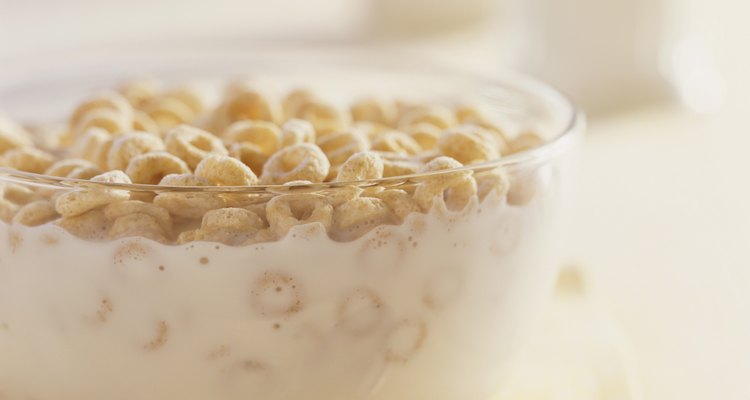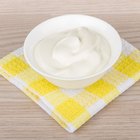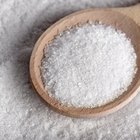
Digital Vision./Photodisc/Getty Images
While most people don't have a difficult time meeting their daily zinc needs, according to the Office of Dietary Supplements, some foods may be fortified with the trace mineral to help boost nutrition in the food item. Zinc oxide is the food additive used to add zinc to food.
What Is Zinc Oxide?
Zinc oxide is a chemical compound that creates a white powder that cannot be dissolved in water. While the compound is safe to use in food, it is also used in inedible products, including paint, makeup, lubricants and adhesives. Zinc is naturally found in the earth's crust, but the zinc oxide used to fortify food is most likely synthetic, according to metal oxide maker Nanum Nanotecnologia.
Role in Food
The role of zinc oxide in food is fortification, which is a process of deliberately adding nutrients to food to increase its nutritional value. Zinc oxide may be found in breakfast cereals, nutrition drinks and nutrition bars. The amount of zinc oxide added to food may vary. Reading the food label and ingredients list can help you identify foods fortified with the mineral.
Who Needs Zinc Oxide
Foods naturally rich in zinc include oysters, hamburger, crab, chicken, cashews, yogurt and chickpeas. If you're not getting enough zinc in your diet from the foods you eat, you may need to consider looking for foods that contain added zinc oxide. Your doctor may help you determine whether you're deficient in zinc. Common symptoms include loss of appetite, an increase in susceptibility to illness, hair loss, diarrhea or the development of eye or skin lesions. While most adults are able to meet their zinc needs, people over the age of 60 may be most at risk for deficiency, says ODS.
Why You Need Zinc
Zinc is essential, which means you must get it from the food you eat. If you can't get it from natural whole-food sources, then fortified foods make a good choice. Zinc is important for enzymatic reactions, immune health, wound healing and synthesis of DNA. It also plays a role in making sure you can taste and smell.
Related Articles

What Is Glycerine Used For?

Zinc & Copper for Aging Skin

Food Sources of Phosphatidylcholine

Selenium & Silica

List of Foods Containing High Amounts ...

How to Make Breading Stick to Meat ...

Merle Norman Ingredients

What Foods Provide Calcium D-Glucarate?

How to Use Copper Peptide With Vitamin C

Are There Any Harmful Ingredients in ...

Alum as an Ingredient in Wrinkle Cream

What Are the Ingredients in Yoplait ...

What Information on a Food Label Is ...

What Are the Benefits of BioSil?

A List of Foods That Contain Choline

What Foods Are High in Malic Acid?

Nutritional Information for Johnny's ...

Dimethicone Hazards

Does Benefiber Lower Cholesterol?

The Difference Between Retin A & Renova
References
Writer Bio
Jill Corleone is a registered dietitian and health coach who has been writing and sharing her love of food, nutrition and health with anyone who'll listen for almost 20 years. Her work has been featured on the Huffington Post, Diabetes Self-Management and Working Mother.
Photo Credits
Digital Vision./Photodisc/Getty Images